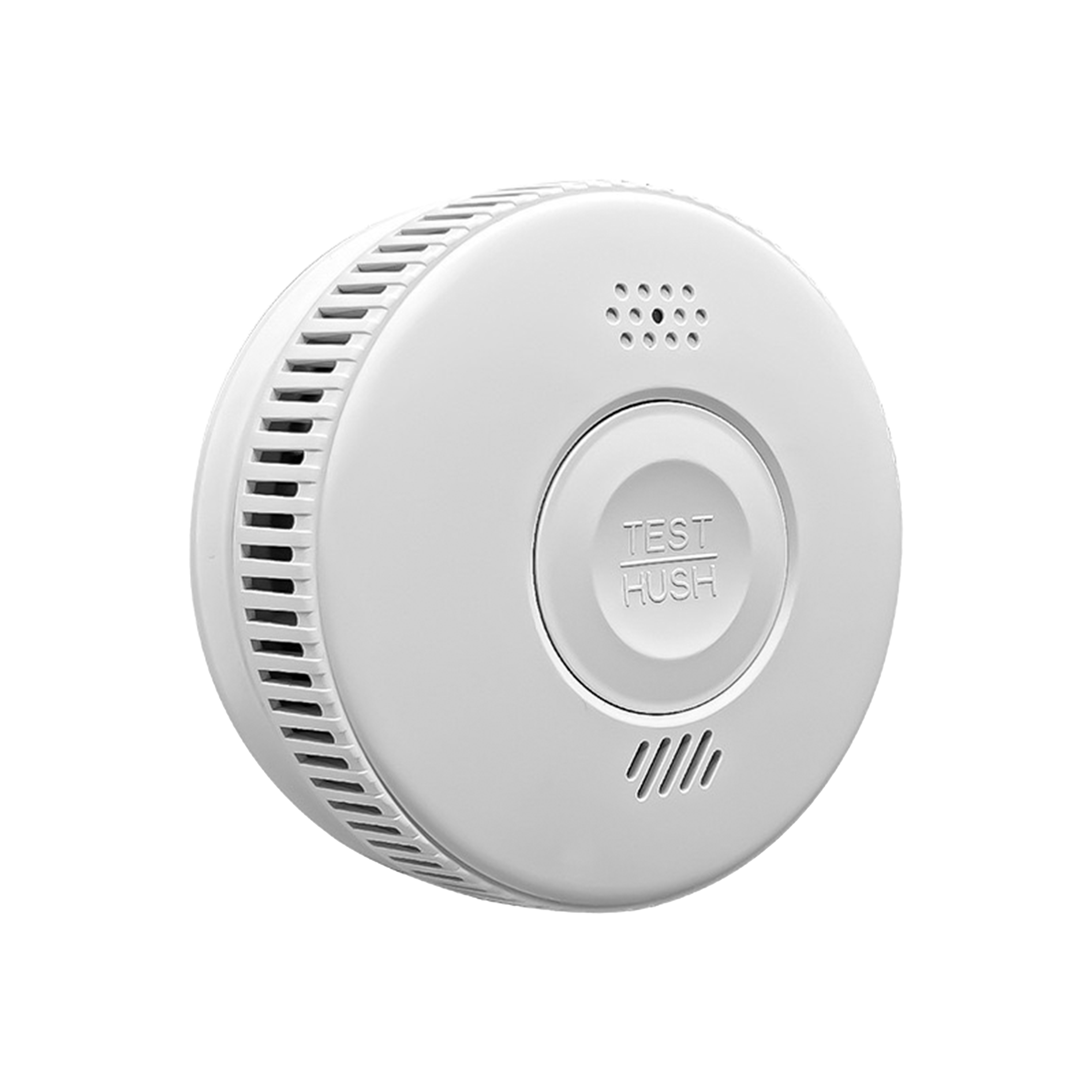Smoke Detector Alarms
In modern families, safety is always one of the most concerned topics. Fire, as a sudden accident, will not only cause huge property losses,
but also threaten life safety. Therefore, smoke alarms, as fire warning devices, have gradually become indispensable safety equipment for
homes and commercial places. This article will explore the working principle, types, installation precautions and maintenance importance
of smoke alarms.
Working principle of smoke alarm:
Smoke alarms usually consist of three parts: detectors, alarms and power supplies. Its working principle is based on the effect of smoke
particles on light or current. When a fire occurs, smoke particles will enter the alarm and interfere with light or current, triggering the alarm
system and issuing a loud alarm to remind residents to take timely escape or fire extinguishing measures.

Types of smoke alarms:
1. Photoelectric smoke alarm: Using the principle of light, it is suitable for detecting slow-burning flames (such as wood, paper, etc.). It is
sensitive and can effectively reduce false alarms.
2. Ion smoke alarm: It uses radioactive materials to generate ion flow, which is suitable for fast-burning flames (such as oil, gasoline, etc.).
Although it reacts quickly, it may be more sensitive to certain smoke (such as kitchen smoke) and prone to false alarms.
3. Dual sensor smoke alarm: Combining photoelectric and ion technology, it can detect different types of smoke more comprehensively,
reduce false alarm rates, and improve safety.
Installation precautions
Location selection: Smoke alarms should be installed in every bedroom, hallway, and near the kitchen, but should not be installed directly
in the kitchen to avoid frequent false alarms due to smoke generated during cooking.
Height: Smoke tends to rise upward, so smoke alarms should be installed within 12 inches (about 30 cm) of the ceiling to ensure the most
effective detection.
Avoid interference: Avoid installing smoke alarms in humid or extremely cold places, such as bathrooms or windows, to reduce the risk of
false alarms and damage.
The importance of maintenance
In order to ensure the effectiveness of smoke alarms, regular maintenance and inspections are essential:
Regular testing: Test the function of the smoke alarm at least once a month to ensure that it is working properly.
Replace the battery: It is generally recommended to replace the battery every 6 months, and the use of long-life batteries can extend the service life.
Cleaning equipment: Clean the housing and detector of the smoke alarm regularly to ensure that there is no dust and debris affecting its sensitivity.
Replacement of products: The service life of the smoke alarm is generally 8 to 10 years. It should be replaced in time after expiration to ensure the
reliability of fire warning.
Smoke alarm is a key device that cannot be ignored in every family's safety protection. Correct selection, installation and maintenance of smoke alarms
can greatly reduce the risk of fire and provide an important layer of protection for our lives. When facing fire hazards, smoke alarms will always be our
most trusted "guardians". Everyone should be aware of its importance and take appropriate measures to ensure the safety of life and property.

